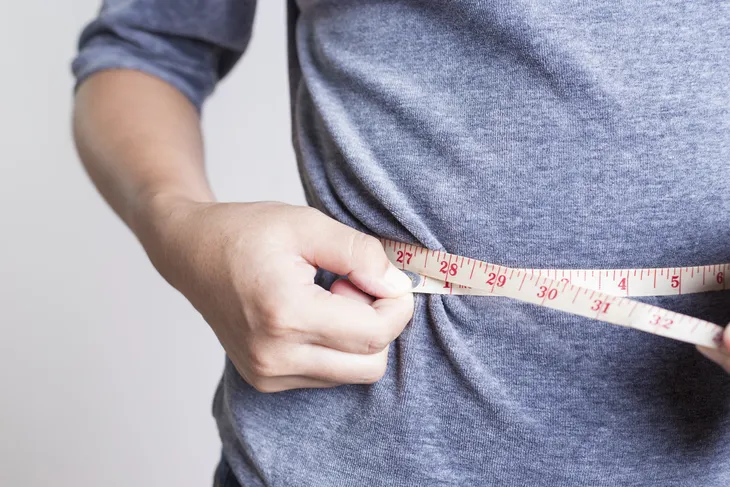The condition known as fibromyalgia is a chronic syndrome that comes with a few different symptoms, the most prevalent of which is simply pain that can impact just about any part of the body. Like many other health conditions, it affects people in drastically different ways, with some individuals able to lead generally normal lives, and others having trouble performing even basic functions, like getting up and going to work in the morning.
In addition to pain, individuals with fibromyalgia may feel frequently tired, sick to their stomach, and they may experience persistent headaches. As for a cause, that’s largely unknown, though some experts believe it has something to do with the genetic makeup of the central nervous system. In any case, it’s a source of consistent pain and discomfort for a growing number of people. That leads to one big question: what can we do to help people with fibromyalgia? In particular, are there natural ways to help manage the symptoms associated with this condition?
1. Magnesium
Magnesium is a critical mineral and it’s vital that everyone, and especially people with fibromyalgia, get enough of it every day. Why? Because it can help prevent painful muscle cramps and spasms, both of which are often symptoms of fibromyalgia.
If you’re wondering how you can get a sufficient amount of magnesium, consider adding it to your diet through green, leafy vegetables like spinach and kale, veggies that also contain loads of fiber, which is excellent for the digestive system. You can also find magnesium in meat and milk and, of course, you can also take a magnesium supplement or multivitamin that contains this particular mineral.
2. Light Exercise
Research has shown that individuals with fibromyalgia who engage in regular physical activity were less likely to experience intense bouts of pain and other symptoms associated with the condition. Although many people with physical pain, and especial muscle discomfort, tend to avoid exercise because they fear it will only intensify the problem, light exercise like walking or relaxed swimming can actually help to soothe the muscles and lower the chances of experiencing a flare-up of fibromyalgia pain.
That said, it’s important the exercise remains light — meaning we’re not recommending you join the local cross-country or football teams — and that you pace yourself carefully. Additionally, anyone with fibromyalgia interested in becoming more physically active should have a frank conversation with their doctor on the subject before moving ahead.
3. Yoga
Yoga is steadily growing in popularity but primarily because of its ability to help participants burn calories and fat and fight back against the many stressful situations of the personal and professional worlds. However, it hasn’t received quite as much attention for its ability to help fibromyalgia patients overcome the more painful and uncomfortable symptoms associated with the condition.
But that’s changing all the time. Recent studies show that participating in a yoga program just a few hours a week can result in a significant reduction in the pain and fatigue common among fibromyalgia patients. Additionally, these yoga programs need not be carried out in public and are generally appropriate for in-home use.
4. Deep Breathing
Deep breathing techniques have been used for generations for a wide variety of purposes, from dealing with a sudden emergency to helping one deal with mounting stress in their personal or professional lives. But it can also help fibromyalgia patients deal with the pain and discomfort their condition often sends their way.
In fact, reducing one’s breathing (and in doing so, reducing one’s heart rate) can help one reframe the pain they’re feeling and help reduce its impact on the mind and body. That said, this isn’t as easy as it sounds. Talk to your doctor about using breathing techniques to help with your fibromyalgia.
5. Tai Chi
It’s still working its way into North American society, but this ancient Chinese mind-body exercise routine has the potential to help people with regular muscle pain, like those suffering from fibromyalgia, find significant relief. Already some studies have shown that tai chi can help improve sleep and provide relief from depression and a variety of irritating physical ailments.
The key is to learn how to do tai chi properly. If you don’t live in an area that has an actual tai chi class, head online, where you should be able to find videos showcasing proper techniques. Like other light exercise, including walking and swimming, tai chi could help get your muscles moving, thereby boosting flexibility and helping alleviate cramps and pain.
6. Acupuncture
At first glance, acupuncture can be a little intimidating, particularly for those who haven’t been paying attention to its rapid spread in popularity in the United States and Canada. But this type of therapy has a growing body of specialists and patients who, together, are convinced that acupuncture can help with a wide range of health issues, including fibromyalgia.
If you’re not familiar with it, acupuncture has the potential to boost the way brain receptors work and, at the same time, lower the impact of pain signals. Studies examining brain activity have showed that individuals with fibromyalgia who were undergoing acupuncture saw their pain lessen significantly.
7. Massage
Massage therapy has rapidly become one of the most popular methods for dealing with sore muscles, whether they’re in the lower back, hips, or some other part of the body. For individuals who have struggled with muscle pain for years, massage therapy can have a dramatically positive impact on their lives, giving them the ability to do things they once thought impossible to carry out.
The same benefits may be available to people struggling with fibromyalgia. A recent study found that fibromyalgia patients who underwent massage therapy for a series of 20 sessions each lasting an hour and a half found they experienced considerably less pain and even anxiety following those sessions. Given that a growing number of companies now include massage therapy in their group benefits package, there’s never been a better time to give it a try.
8. Losing Weight
Losing weight: it’s often the solution for pain and discomfort, particularly that affecting the muscles. But what about weight loss has such a dramatic impact on fibromyalgia and similar conditions?
The answer has a lot to do with the way excessive physical weight impacts the body and specifically the muscles and bones. The closer one is to their recommended weight, the less likely they are to struggle with sore muscles and aching bones because those parts of the body are not as overburdened. In essence, by taking weight off, you reduce the amount of pressure placed on your bones, joints, and muscles. Of course, weight loss doesn’t occur overnight, so have a frank conversation with your physician before launching into any kind of weight loss program.
9. Apply Heat
Individuals with fibromyalgia often experience intense muscle pain and spasms that can make taking care of even the most basic daily activities more difficult than usual. One way to help alleviate some of this pain and discomfort is to apply heat, a simple and natural home remedy that can have an immediate impact.
What kind of heat are we talking about? A hot shower is helpful, but soaking in a warm bath for twenty minutes or more may have a more lasting effect on the pain. For even better results, add epsom salts to your bath, as they can help further soothe your muscles and help you wind down after a long day. This remedy can also improve blood flow through the body, which may have a positive impact on your fibromyalgia pain.
10. Apply Cold
Applying heat to the muscles in the way of a hot shower or bath can help encourage blood flow through the body and bring pain relief to individuals with fibromyalgia. But it may be even more beneficial to use that heat in coordination with applying cold, such as through some ice cubes packed in a plastic bag.
By moving between hot and cold, you can help constrict the blood vessels and reduce the inflammation that can cause muscle pain in individuals with fibromyalgia. Try switching up your order (heat or cold first) to see which method works best for your muscle pain.
11. Melatonin
Many people with fibromyalgia have trouble sleeping, largely because of the muscle pain that often accompanies the condition. To help with this issue, many fibromyalgia patients use powerful sleeping medications that can come with a long list of nasty side effects, from grogginess the following morning to upset stomach and other digestive issues.
You may be able to avoid some of these problems by instead trying melatonin, a natural sleep solution that can be acquired in supplement form. Many individuals with sleep issues find that melatonin has the same impact as sleeping pills with fewer of the side effects. Just be sure to discuss the use of melatonin with your doctor before starting to use it.
 / Shutterstock.com
/ Shutterstock.com12. Regular Stretching
Since so many fibromyalgia patients struggle with muscle soreness that can last through the day and make sleeping particularly difficult, there’s some proven benefit in carrying out regular stretching sessions to help bring flexibility to the muscles and connective tissue.
By improving the flexibility of your muscles, you can help build their endurance, allowing you to perform more physical activities without suffering debilitating pain. Of course, each case of fibromyalgia is different, which means the types of stretches you perform should be tailored to your unique situation. Talk to your doctor about working with a physiotherapist to develop an effective stretching routine.














